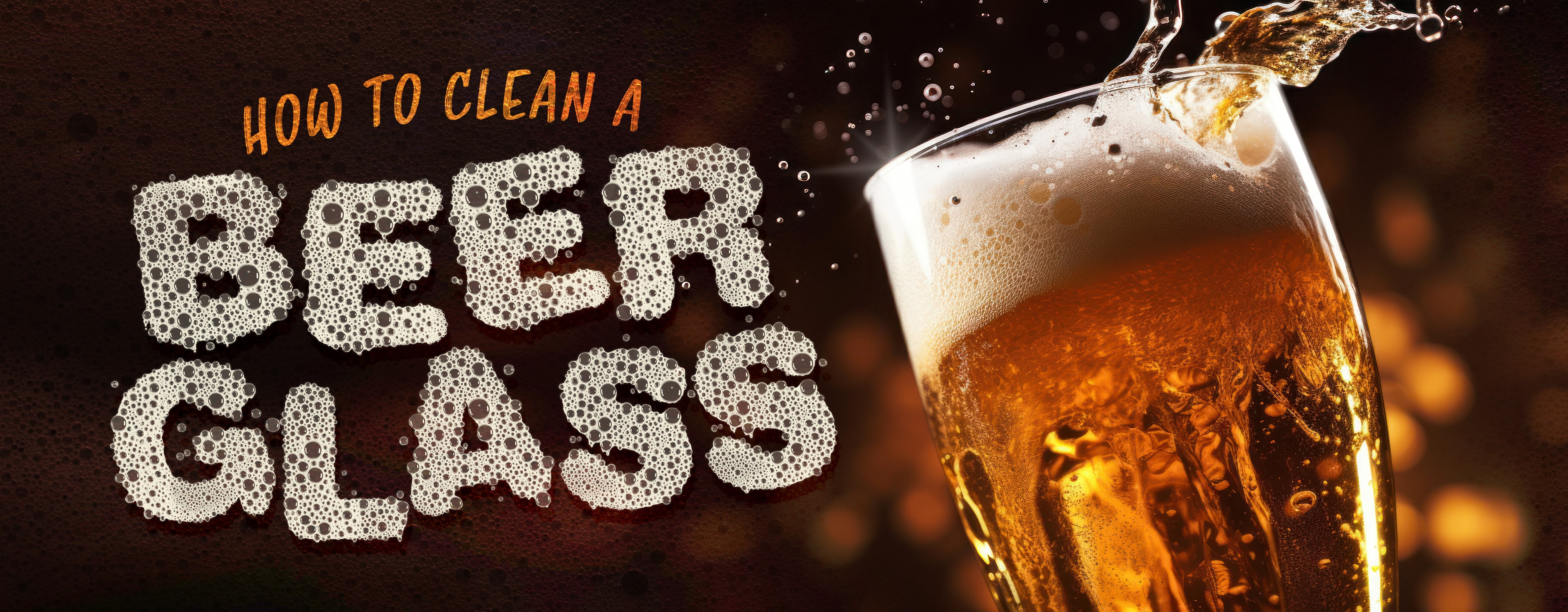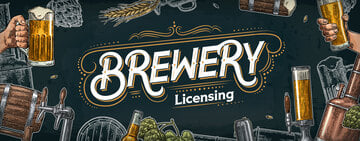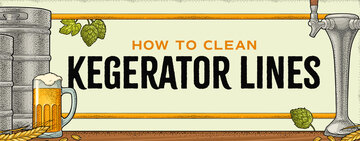How to Clean a Beer Glass
Last updated on Dec 11, 2024Michale LeRoyWhen it comes to enjoying a cold, refreshing beer, the cleanliness of the glassware plays a crucial role in the overall drinking experience. Clean glassware isn't just about aesthetics - it directly impacts the taste, aroma, and presentation of the beer. You'll also get the maximum number of pours from your keg if the beer glasses are clean. Keep reading to learn the best way to clean your beer glasses so you can achieve the perfect pour.
What Is a Beer-Clean Glass?

A beer-clean glass is a glass that has been thoroughly cleaned and rinsed to remove any residues that could affect the quality of the beer. This means no leftover soap scum, oils, or particles that could alter the flavor profile of the beer you're about to pour. When you pour a beer into a clean glass, the smooth surface allows the carbonation to release evenly, creating a perfect head of foam that enhances the aroma and taste of the beer. A dirty glass, on the other hand, can cause the beer to go flat quickly, resulting in a lackluster drinking experience.
A glass of beer with a foamy head looks appealing and also serves an important purpose. With a clean glass, the freshly poured beer should produce a 1/2" to 1" tall head. This means you only need to fill a 16-ounce glass with 14 ounces of beer, translating to more glasses per barrel and more profit for you. Here is a breakdown of the difference that a beer-clean glass can make:
- 16-ounce pour: 124 pours in a half-barrel keg
- 14-ounce pour: 142 pours in a half-barrel keg
You could potentially gain up to 18 more glasses of beer per keg with clean beer glasses!
How to Clean Beer Glasses the Right Way
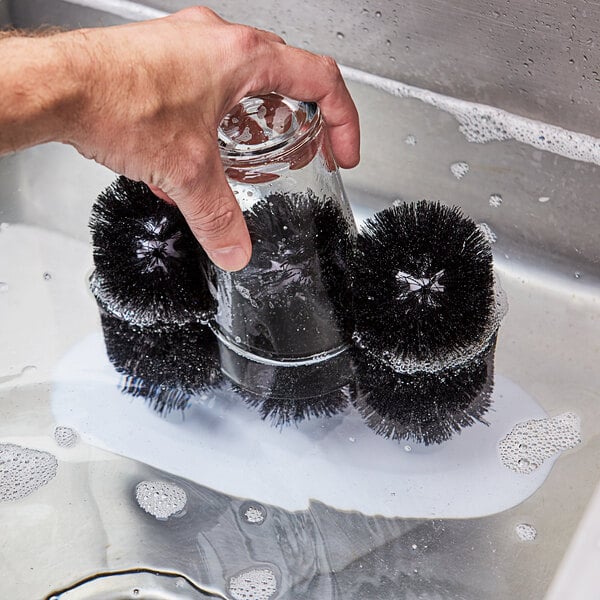
We recommend using bar glass detergent and a brush washing system to get the best results with your beer glasses. This takes more effort than placing your glasses in a dishwasher, but the results are worth it.
- Start with a freshly cleaned three-compartment sink.
- Place the brush system in the first bowl and fill the sink with hot water almost to the top of the brushes.
- Measure the proper amount of glass cleaner mentioned on your packet and add it to the first sink, sprinkling over the brushes.
- Fill a second sink bowl with clean hot running water for rinsing the detergent off the beer glasses.
- Fill a third sink with about 3 gallons of hot water. Add the proper amount of sanitizer and test that it's the proper concentration.
- Wash the glass in the first sink, making sure all parts of it come in contact with the brushes. If you're using a 3-brush manual system, clean with the center brush.
- Rinse each glass in the second bowl, being careful not to form an air pocket in the glass when it's submerged.
- Repeat this process in the third bowl, dipping the glass into the sanitizing solution. Follow any local and/or national sanitation guidelines for proper sanitizing.
- Air dry the sanitized glass upside down, on a corrugated drain board to allow for maximum airflow around the glass and optimal results.
How Can You Tell If a Beer Glass Is Clean?
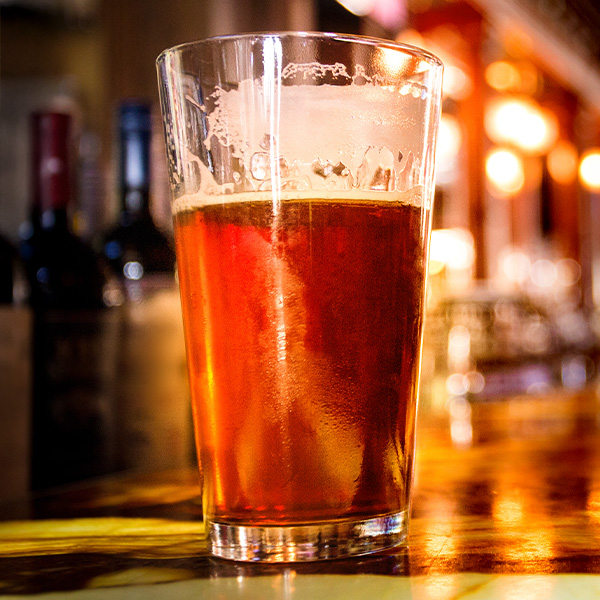
A visual inspection doesn't always reveal the culprits behind a dirty glass. Grease-based residue from oily foods, dish soap, or lipstick can go unnoticed, but it speeds up the release of carbonation and causes beer to go flat more quickly. We recommend performing a test on your beer glasses to find out how clean they actually are:
Sheeting Test
This method uses water to reveal areas of residue. Water will be repelled by grease or fat on the walls of the glass.
- Dip the glass in water.
- Check to see how it coats.
- If it coats the glass evenly, it's clean.
- If it breaks into droplets, it's dirty.
Salt Test
Similar to the water sheeting test, this method uses salt to check for areas of greasy residue. The salt will not cling to any oily patches on the glass.
- Sprinkle salt inside a wet glass.
- If the salt clings to the inside of the glass evenly, the glass is clean.
- If the salt clings unevenly and leaves bare patches, the glass is dirty.
Lacing Test
Lacing refers to the pattern left behind by the beer foam as the beer is consumed. You can tell if the glass is free of residue by observing the types of lacing that occur.
- Fill a glass with beer
- Pour out a couple inches of beer and observe the walls of the glass.
- If there are parallel rings of foam left behind, the glass is clean.
- If there is no pattern or a random pattern left behind, the glass is dirty.
Benefits of Clean Beer Glasses
If your beer selection is small and it's not the highlight of your menu, you can get away with cleaning your glasses in a dishwasher. But if you run a brewery or taphouse and beer is your claim to fame, there are many benefits to using our beer cleaning method. Here's why it's so important to keep your beer glasses clean:
- Aesthetic Appeal: Clean glassware ensures that your beer looks visually appealing, with no smudges, fingerprints, or residue clouding the glass. A clean glass allows the beer's color and carbonation to shine through, enhancing the overall presentation.
- Flavor Preservation: Residue or dirt on the glass can negatively affect the flavor of the beer. Any leftover soap, grease, or other contaminants can alter the taste of the beer, detracting from its intended flavor profile. Keeping your glassware clean ensures that you taste the beer as the brewer intended.
- Aroma Enhancement: Just like with wine, the aroma of beer plays a significant role in the overall taste experience. Dirty glassware can trap odors from food, detergent, or other sources, interfering with the beer's aroma. Clean glassware allows the beer's aroma to fully develop, enhancing the drinking experience.
- Carbonation Maintenance: A clean glass with no residue ensures that the beer retains its carbonation levels. Dirty glassware can cause the carbonation to dissipate quickly, resulting in a flat beer that lacks the effervescence and crispness that beer lovers enjoy.
- Head Retention: The foam, or head, on top of a beer is not just for show - it also contributes to the beer's mouthfeel and flavor perception. Clean glassware promotes better head retention, allowing the beer to be enjoyed with the right balance of foam and liquid.
In essence, clean glassware is essential for fully appreciating the nuances of different beer styles, from lagers to stouts. By maintaining clean beer glasses, you can elevate your drinking experience and savor the true flavors and aromas of your favorite brews.
